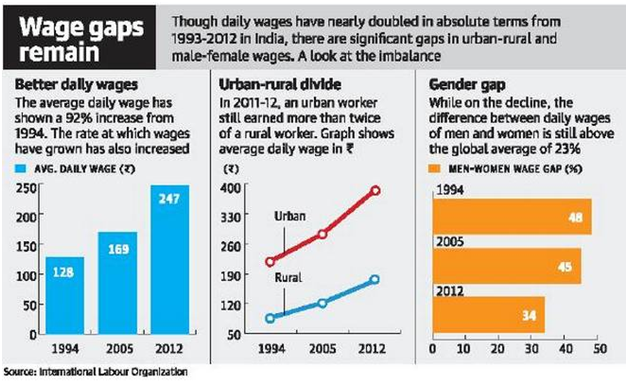International Labour Organization : India Wage Report:
- Real average daily wages in India almost doubled in the first two decades after economic reforms, but low pay and wage inequality remains a serious challenge to inclusive growth, the International Labour Organization warned in its India Wage Report.
- The ILO has called for stronger implementation of minimum wage laws and strengthening of the frameworks for collective bargaining by workers.
- This is essential to combat persistent low pay in some sectors and to bridge the wage gaps between rural and urban, male and female, and regular and casual workers.
- Overall, in 2009-10, a third of all of wage workers were paid less than the national minimum wage, which is merely indicative and not legally binding. That includes 41% of all casual workers and 15% of salaried workers.
- In 2011-12, the average wage in India was about Rs. 247 rupees a day, almost double the 1993-94 figure of Rs. 128.
- Regional disparities in average wages have actually increased over time, with wages rising more rapidly in high-wage States than in low-wage ones.
- The gender wage gap decreased from 48% in 1993-94 to 34% in 2011-12, but still remains high by international standards.
- And of all worker groups, the average wages of casual rural female workers was the lowest, at just Rs. 104 a day.
- The ILO also highlighted the lack of timely data as a hindrance, pointing out that its analysis — and the decisions of Indian policy makers — was dependent on 2011-12 data from the Employment and Unemployment Survey (EUS) of the National Sample Survey Office (NSSO), as that was the last year in which the survey was done.
